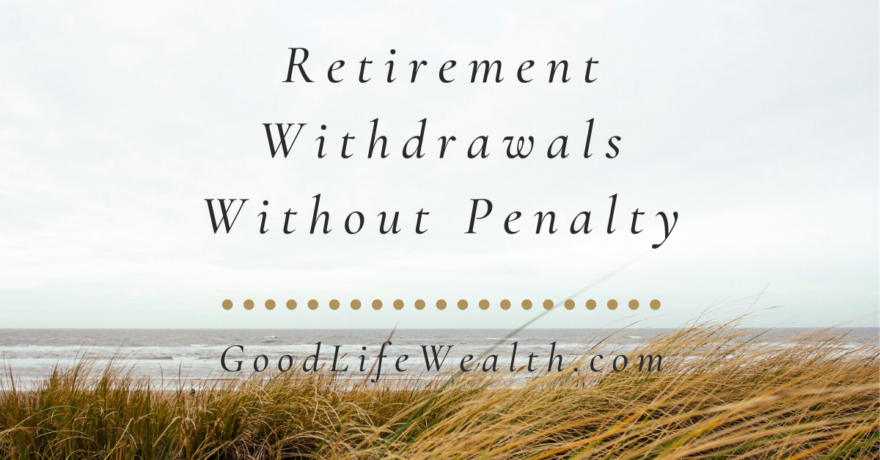Guaranteed Retirement Income increases satisfaction. When you receive Social Security, a Pension, or other monthly payment, you don’t have to worry about market volatility or if you will run out of money. You’re guaranteed to receive the payment for as long as you live. That is peace of mind.
Research shows that people prefer pension payments versus taking withdrawals from an investment portfolio. When you were working, you had a paycheck show up every month and you didn’t feel bad about spending it. There would be another paycheck next month. Unfortunately, with an investment portfolio, retirees dislike spending that money. There is “range anxiety” that their 401(k) or IRA will run out of money. There is fear that a market drop will ruin their plans. After spending 40 years building up an account and it’s not easy to reverse course and start to spend that nest egg and see it go down.
Corporate and Municipal pensions have been in decline for decades. As a result, most of us have only a Social Security benefit as guaranteed income. That’s too bad. 401(k) plans are a poor substitute for a good pension. You need to accumulate a million bucks just to get $40,000 a year at a 4% withdrawal rate. It places all the responsibility on American workers to fund their own retirement, and this has led to wildly disparate retirement readiness between people. Even those who accumulate significant retirement accounts still have the worries about running out of money. Sequence of Returns, poor performance or mismanagement, cognitive decline, or longevity are all risks.
The solution to create guaranteed lifetime income is a Single Premium Immediate Annuity, or SPIA. A SPIA is a contract with a life insurance company in which you trade a lump sum in exchange for a monthly payment for life. For as long as you live, you will get that monthly check, just like a Pension or Social Security. When you pass away, the payments stop. For married couples, we can establish a Survivor’s Benefit that will continue the payout (sometimes reduced at 50% or 75%) for the rest of the survivor’s life, if the owner should pass away.
How much would it cost? For a 65-year old man, a $100,000 premium would establish a $537/month payment for life. That is $6,444 a year, or a 6.4% rate on your premium. For a 65-year old woman, it would be $487, a month, or $5,844 a year (5.8%) For a couple, if the wife was also 65, that same premium would offer $425/month for both lives (100% survivors benefit). That’s $5,100 a year, or 5.1%. The greater the expected longevity, the lower the monthly payment.
There are some fairly obvious advantages and disadvantages of a SPIA.
Pros
- Lifetime income, fixed, predictable, and guaranteed
- No stock market risk, no performance concerns, no Sequence of Returns risk
Cons
- Permanent decision – cannot reverse later
- Some people will not live for very long and will get only a handful or payments back
- No money leftover for your heirs
- No inflation protection – monthly payout is fixed
I’ve been a financial advisor since 2004 and I have yet to have a client who wants to buy a SPIA. For some, the thought of spending a big chunk of money and the risk that they die in a year or two, is unbearable. However, the payout is fair, because some people will live for much longer than the average. The way insurance works is by The Law of Large Numbers. An insurance company is willing to take the risk that someone will live for 40 or 50 years because they know that if they sell thousands of annuities, it will work out to an average lifespan across the group. Some people live longer than average and some live less than average.
Two Ways to Use a SPIA
Although they remain unpopular, SPIAs deserve a closer look. Let’s immediately throw away the idea that you should put all your money into a SPIA. But there are two ways that a SPIA might make sense as part of your retirement income plan.
- Use a SPIA to cover your basic expenses. Look at your monthly budget. Assume you need $3,000 a month to cover all your expenses. If you have $2,200 in Social Security benefits, buy a SPIA that would cover the remaining $800 shortfall. For the 65-year old couple above, this $800/month joint SPIA would cost $188,235. Now you have $3,000 a month in guaranteed lifetime income to cover 100% of your basic expenses. Hopefully, you still have a large investment portfolio that can grow and supplement your income if needed.
The nice thing about this approach is that it takes a bit less cash than if you follow the 4% rule. If you needed $800 a month ($9,600 a year), a 4% withdrawal rate would require you have a portfolio of $240,000. The SPIA only requires $188,235.
Let’s say you have a $1 million portfolio. You could (a) put it all in the portfolio and start a 4% withdrawal rate, or (b) put $188,235 into the SPIA and keep the remainder in the portfolio. Here’s what that would look like for year one:
- a. $1 million at 4% = $40,000 potential income
- b. $188,235 SPIA = $9,600, PLUS $811,765 portfolio at 4% = $32,470. The combined income from the SPIA and portfolio is now $42,070
You have increased your income by $2,070 a year and you have established enough guaranteed income to cover 100% of your monthly needs. Then, you are not dependent on the market to cover your basic expenses each month.
2. The second way to think of a SPIA is as a Bond replacement for your portfolio. Instead of buying Treasury Bonds and worrying if you will outlive them, you can buy a SPIA, and the insurance company will buy very safe bonds. The insurance company then assumes your Longevity risk.
Back to our example above, let’s say your $1 million portfolio is invested in a 60/40 allocation (60% stocks, 40% bonds). Just consider the SPIA as part of your fixed income sleeve. If you had a target of $400,000 in bonds, rather than letting them sit in 10-year Treasuries earning 0.7% today, go ahead and put $188,235 in the SPIA and keep $211,765 in bonds. Your $600,000 in stocks remains the same. Now, on your SPIA, you are getting a withdrawal rate of 5.1% to 6.4%. And although you are eating your principal with a SPIA, you have no longevity risk, it’s a guaranteed check. You have reduced the withdrawal requirement from your equities and can better weather the ups and downs of the stock market.
Is a SPIA Right For You?
A SPIA isn’t going to be for everyone. But if you want lifetime guaranteed retirement income a SPIA is a solid, conservative choice. Used in conjunction with the other pieces of your income plan (Social Security and Investment portfolio), a SPIA can help you sleep well at night. Especially for investors who are in great health and with a family history of longevity, it may be worth putting some money into a SPIA and turning on that monthly check. It can help offset the stock market risks that could derail your plans.
I know many parents think putting money into a SPIA will reduce money for their kids to inherit. That might be true. Of course, if you live a long time and run out of money, you won’t be leaving any money to your kids either. Our goal with any retirement income solution is to make sure you don’t outlive your money, which hopefully also means you are able to leave some money to your heirs.
What if the insurance company goes under? Isn’t that a risk? It is. Thankfully, most states protect SPIA policy holders up to $250,000. If you are planning to put more than $250,000 into a SPIA, I would seriously consider dividing your funds between several companies to stay under the limits. Read more: The Texas Guaranty Association. (Note that this information is provided solely for educational purposes and is not an inducement to a sale.)
In the next three articles in this five-part series, we will look at different withdrawal strategies for your investment portfolio. These approaches include the 4% rule, a Guardrails approach, and 5-year Buckets. All of these will help you manage the risks of funding retirement from stocks. But before we get to those, I wanted you to realize that you don’t have to put all your money into stocks to create retirement income. These withdrawal approaches are likely to work, and we know they worked in history. But if you want to buy your own pension and have a guaranteed retirement income, a SPIA could be the right tool for the job.













